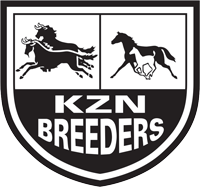The Facts Around Broken Legs – Part II
| The Facts Around Broken Legs – Part II |
 Whether a fracture can be repaired or not depends largely on the type of fracture, the horse’s performance type, size, temperament, the bone involved, the location, configuration, and how well the fracture is repaired. A veterinarian has to weigh up all these factors when making his/her decision about the treatment of a fracture. Even if a fracture is repaired, recovery time might be very long (several months) and the horse might develop secondary complications such as infection or laminitis. Despite the improved success rates in fracture repair, not all equine orthopedic cases end successfully–even the seemingly simple ones. There are many complications involved with fracture repair in racehorses, and often times, it is inhumane to put the animal through the rigours of surgery and post-surgery care. Every case is different. Open comminuted fractures are the most difficult to try and repair, and have the worst prognosis of only a 10% survival rate.
Whether a fracture can be repaired or not depends largely on the type of fracture, the horse’s performance type, size, temperament, the bone involved, the location, configuration, and how well the fracture is repaired. A veterinarian has to weigh up all these factors when making his/her decision about the treatment of a fracture. Even if a fracture is repaired, recovery time might be very long (several months) and the horse might develop secondary complications such as infection or laminitis. Despite the improved success rates in fracture repair, not all equine orthopedic cases end successfully–even the seemingly simple ones. There are many complications involved with fracture repair in racehorses, and often times, it is inhumane to put the animal through the rigours of surgery and post-surgery care. Every case is different. Open comminuted fractures are the most difficult to try and repair, and have the worst prognosis of only a 10% survival rate.
Open fractures are most prone to infection and are very difficult to treat successfully. With open fractures the horse’s chances are reduced due to the high risk of infection, particularly with comminuted fractures that occur on racetracks when horses are galloping at full stretch. If this does happen, the soft tissues will be damaged, the bone will be contaminated, and there will be dirt and grass in the wound, and obviously far from ideal, due to the horse having an even bigger chance of getting an infection. If the horse is one of the fortunate 10-20% survivors they usually will never continue their previous careers, and may only be good for breeding, unless it is an injury in the hind-leg and the horse is a stallion, which will challenge his career even more when it comes to covering mares.
Infection can also develop within a closed fracture. Bones break inside the skin and it looks like a bag of crushed ice when the leg is opened. This will cause an added soft tissue injury, and where infection can occur.
Some of the more common types of fractures seen in racehorses are as follows:
Fractures in the bones of the foot
The Navicular and Coffin bones, are usually the easiest to repair and can be well managed through box rest and corrective shoeing at a minimal cost. Less easy to repair is the fracture of the first phalanx, the first pastern bone. Usually this is in two pieces, but it can also be comminuted, meaning the bone can be in three pieces or as much as 500 pieces! This sort of injury would require an external fixator. The fewer pieces to repair in a break, the better the prognosis for the horse and the sooner he can return to work. The more pieces of bone there are to repair, the more likely the horse will be only be useful as a breeding animal or a companion horse.
It is also possible to fuse a horse’s pastern joint, which is responsible for only 3-5% of the flexion motion in the leg. The coffin joint has significantly more, with the fetlock carrying most of the flexion. Horses can lose 3-5% of their flexion and still retain athletic ability, only if there is enough bone above and below the fracture to hold the bone plates and screws in place. In the pastern, by using both the first and second phalanges, they will be fused to become one bone structure, and the surgeon will remove the cartilage in between so that this will become possible.
Condylar fractures
Condyles are the knuckles at the end of the long bones that help to form joint. A condylar fracture occurs when a crack begins near the joint surface and extends outward through the bone. In racehorses, condylar fractures occur most often at the lower end of the cannon bone where it forms the fetlock joint. The collateral ligament that stabilizes the joint and keeps it in alignment may prevent a condylar fracture from becoming displaced. So, even if a horse is lame, the fracture may not be evident. However, in severe cases when the fracture becomes displaced, the break will extend to the outer surface of the bone, essentially breaking off the knuckle and a portion of the bone.
Generally, repetitive trauma causes condylar fractures. It is very likely that the amount of impact a horse’s bones have undergone in the previous three months is a major factor in the development of condylar fractures. A lateral condylar fracture, usually seen in racehorses, runs from the front to the back of the leg and up the lateral side (outside). This can often be repaired well enough so that horses can go back to work just as strong as before the injury, and it usually repaired by using screw fixation, which is often much easier said than done, being time consuming and requires advanced techniques in surgery. Cases are individual, but with non-displaced lateral condylar fractures, approximately 70% of horses can go back to racing.
A repair that cannot be fixed is the comminuted humeral fracture. The humerus lies in the front leg and connects the shoulder to the elbow. In young horses, this repair can be done, but it is an impossible task in adults. A major nerve runs alongside the bone, and after the bone breaks, the nerve is usually damaged beyond repair. This fracture is also a common injury seen on the track.
Fractures of the knee
The horse’s knee (carpus) is made up of the lower end of the radius (forearm), the upper end of the cannon bone, two rows of small carpal bones in between, and a small, oval-shaped bone at the back of the knee called the accessory carpal bone. Fractures that commonly affect the carpus include chip fractures, slab fractures, and sagittal fractures. A chip fracture is when a small sliver of bone breaks off one of the carpal bones or off the end of a long bone and floats freely in the joint. A slab fracture occurs when the front breaks off one of the carpal bones. Chip fractures and slab fractures both damage the joint surface when the separated fragment hinders the joint surface. Chip fractures also are common in the fetlock joint. Past Master and What A Winter have both had surgery to have knee chips removed since the Vodacom Durban July raceday. Many horses race successfully after the surgery is performed, if not better. A sagittal fracture is a vertical fracture on the front of the largest carpal bone that penetrates the top and bottom surfaces of the bone.
In Part III, we will discuss the complications and recovery from surgery.


